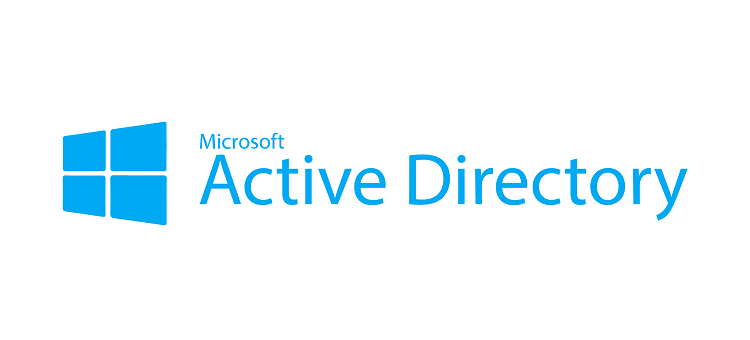Businesses of all sizes are using Microsoft Active Directory to determine which user has network access to what extent. But what exactly is an active directory? Why has it become so popular in the IT domain? And why do most IT help desk companies use them?
Do you know 121 ransomware attacks occurred in the first half of 2021? And the average amount paid to these attackers increased to $570,000? Attackers get access to a secure network by tricking internal members into leaking the company’s sensitive data. Poor control access and permission management can also cause these leaks.
That’s where the Active Directory steps in. It’s a database of information about computers used across your organization and its users. It has a list of the employees at your company with their identity, job titles, and access permission. AD is Microsoft’s best security tool that keeps your network and users safe from cyber threats.
Simply put, the active directory strengthens your network’s security by implementing authorization and authentication protocols. It checks whether the user is who they are claiming to be and ask them to fill in their usernames and passwords to get access to your company’s data.
Active Directory Explained
Active Directory is an access management solution that enables IT service providers to manage their client’s network system, the accounts linked to it, and user access. It has gained popularity in the IT sector for offering robust protection tools and simplified services, like Single Sign-on (SSO) and smoother IT management.
Microsoft introduced AD in 2000 when it replaced the NT-based systems with the Windows 2000 operating system. Active Directory resolved the issues that businesses experienced from Windows’ flat and outdated domain model. AD made user control and access management easier for the IT department.
Over the years, Microsoft added many new functionalities to this network security tool to improve its operation.
Businesses rely on the Active Directory to ensure improved organizational efficiency and better network protection. The primary function of this tool is to enable administrators to give access controls to users within their organizations.
It saves the time of granting each user permission manually every time a user sends a request to access a network resource. Once someone is registered as an authorized user of the network resources, they can access the particular domain easily.
In Active Directory, all files and business documents are stored in a centralized system that can be shared with authorized members. This ensures easy collaboration across different departments within the company. These files are backed up by your IT help desk providers.
How Does it Work?
The database in the Active Directory is structured in a hierarchical format, consisting of multiple elements. Here’s how they work together to strengthen your network security.
Like a web domain, a domain in Active Directory refers to the collection of objects, users, and devices that share the same active directory. It’s the smallest component of the hierarchy. Each device within the IT infrastructure, working on the same network and using the same business database, is grouped into this domain.
A tree is a collection of different domains that share a hierarchical relationship. A forest is a group of these trees and the largest unit of the Active Directory. A forest contains trees that share a logical hierarchy. However, forests are restricted to other ADs and networks that are not configured into the system.
Services of Active Directory
In addition to domain services, AD offers an extensive set of services that make your network safer and promote seamless collaboration. These services include:
1. Active Directory Lightweight Directory Service
AD LDS is the most versatile service, which can run as a standalone application without having to incorporate it into the Active Directory. The main functions of AD LDS are data storage and retrieval. It’s possible to have a separate AD LDS running for different operations within a single system with an independent schema for each.
2. Active Directory Federation Service
To simplify the user experience, Microsoft added ADFS to Active Directory, allowing users to access applications and systems outside the company’s firewall using a set of credentials.
In other words, it extends their access to the networks within and outside the organizational boundaries. The service allows a seamless end-user experience while providing the outsourced helpdesk better control over user accounts.
3. Active Directory Certificate Services
AD CS allows your IT teams to provide, store, and manage encryption certificates. Creating these certificates enables employees within your organization to share data securely over the internet.
The digital certificates are used for the authentication of a user requesting access to the network. The primary use of the active Directory Certificate Service is to maintain confidentiality on the company’s network using encryption. It also supports digital signatures, which strengthens security.
4. Active Directory Right Management Services
The Right Management Services consist of different security tools that an IT team can deploy to ensure effective management. It is a combination of technologies, like encryption and authentication, to augment your network security across all systems and applications.
By setting access permissions for documents, presentations, and confidential files, the RMS prevents sensitive data from getting leaked outside the network. Even the authorized user who’s granted access rights to certain applications can’t print, fax, or copy the document to share it with an unauthorized user once the permission rights are enforced.
Why Do You Need Active Directory?
Active Directory allows you great control over your IT operations. It lets administrators manage user permission on a single system. It’s a customizable and scalable solution, which makes it a cost-efficient tool for all types of businesses.
It also has a data backup feature that can help you restore your database once the tool has been configured. While Active Directory is key to effective IT management, it needs to be structured properly. It’s best to leave the job to the IT help desk company for easier implementation. They will handle all network security, backup, and user operations efficiently.







